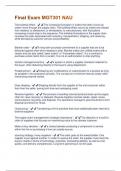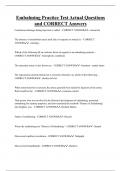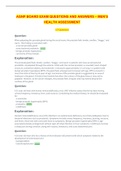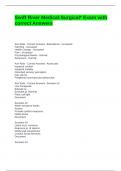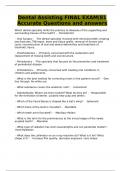Exam (elaborations)
Final Exam MGT301 NAU (Questions & Answers) Rated 100% Correct!!
- Course
- Institution
The bullwhip effect - ️️The increasing fluctuation in orders that often occurs as orders move through the supply chain. The bullwhip effect occurs as orders are relayed from retailers, to distributors, to wholesalers, to manufacturers, with fluctuations increasing at each step in the sequenc...
[Show more]
